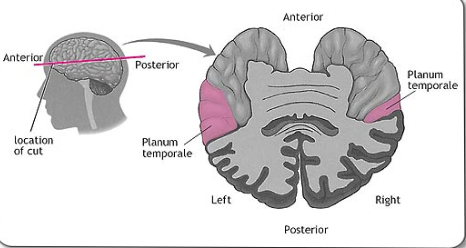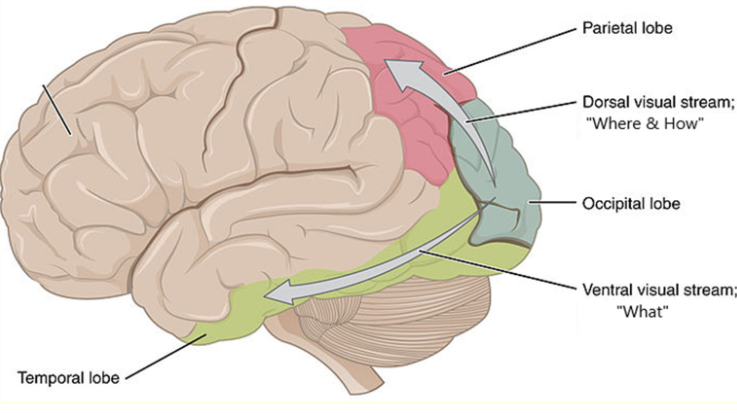Psych 255 (2.11)
1/26
Earn XP
Description and Tags
10 principles of nervous system function
Name | Mastery | Learn | Test | Matching | Spaced |
|---|
No study sessions yet.
27 Terms
NS creates movement and perception
The nervous system creates a perceptual reality for each of us… and allows us to act within this reality.
The NS is forever changing (plasticity)
The brain’s ability to change is called “plasticity”
The brain experiences very real physical structural change as a consequence of our real life experiences
It is not a good or bad thing it is just a thing, it really depends on how the brain is changing and what is causing it.
Does plasticity affect only humans?
Happens to all species, larger brains have more plasticity and are able to change more, even older brains have plasticity, but some factors may inhibit it. cells even in petri dishes as long as they are alive will change. It is a fundamental aspect of the NS.
Why is plasticity the basis for applied psychology?
Basis for applied psychology (changing behaviour) because it explains learning, memory, skill acquisition, addiction explains why behavioural therapy works.
Many of the Brain’s Circuits are CrossedMany of the Brain’s Circuits are Crossed
most sensory inputs to the brain & motor outputs from the brain are crossed.
Auditory info is predominantly contralateral, somatosensory info is all contralateral
olfactory info has stronger and more ipsalateral pathways than contralateral
vision and gustation have bilateral pathways.
Humans and animals with eyes on the front of our head have pathways that end result of contralateral processing.
Motor pathways are majority contralateral, motor pathways for arms and legs are completely contralateral
controlling our body have both contra and ipsalateral pathways
Where do the circuits mainly cross?
Not really happening in higher regions of the brain, usually just in the SC, brainstem, or the neural pathways (vision for the optic chiasm)
Functions are produced by Neuronal Circuits (multiple neurons connected by synapses)
Neurons don’t work in isolation—rather, functions are produced by circuits of neurons working together
Neuronal circuits can be very simple (2 neurons ex. sensory neuron synapsing on a motor neuron for a spinal reflex) or very complex (networks. More often the case. 1 neuron connects with many others going downstream creating a large scale brain network.)
Brain is Symmetric & Asymmetric in structure and function
structural asymmetry
E.g., planum temporale (much larger in left hemipshere)
structural symmetry
E.g., primary sensory & motor cortices
functional asymmetry
E.g., language vs. music and prosody
functional symmetry
E.g., sensory & motor control (in both hemispheres there is sensory
processing, contralateral processing)

Is the brain symmetrical?
The brain may appear symmetrical but there is some difference between the hemispheres
Why is the planum temporale asymmetrical?
Left region has the wernicke's area so planum temporale is bigger on the left because of the asymmetrical function of language being dominant on the left hemisphere.
Right hemisphere planum temporale is for music and prosody processing activated when we are listening and producing music.
Hierarchical & Parallel Organization
Sensory and motor processing occur at multiple levels of the CNS (spinal cord, brainstem, and forebrain)
a hierarchical system processes information in a series of steps with increasing complexity (basic processing of properties (colour, shape, etc)->recognition->identify->label)
a parallel system processes info concurrently (different parts of the brain are doing different but related tasks at the same time)
How does a parallel system process info concurrently?
vison ex. looking and recognizing an object while a different part of our brain is processing how to manipulate that object
Ventral visual stream (in temporal lobe. the what stream) identifies what an object is after the basic properties (colour) are processed by the occipital lobe
Dorsal visual stream (in parietal lobe. how and where stream) tells us where an object is in relation to ourselves and how to interact with it. Happens at the same time you are recognizing the object.
Sensory and motor processing and organisms
It has become more refined as we evolve, simple organisms only have a nerve cord that allows them to sense and react to stimuli.
More complex organisms have SC and brainstem allowing for more complex sensory processing and responses.
Most complex organisms have SC, BS, FB allowing for integrated, coordinated, refined, and elaborate responses
Complex organisms info processing occurs in both hierarchical and parallel system
Our nervous system is characterized bySensory and Motor Divisions
peripheral nervous system (both nerves are somatic)
spinal nerves (autonomic motor projections)
mixed nerves. contains both sensory (afferent) and motor (efferent) nerve fibers
cranial nerves
sensory, motor or mixed (sensory and motor pathways bundled into a single nerve, composed of axons going 1 direction and the other direction)
4 cranial nerves with autonomic functions
central nervous system
Spinal cord all the way up to the cortex
have somatosensory pathways that convey info up to the brain and have different motor pathways that carry the motor commands down the SC (down the brainstem to the spinal nerves). Have motor and sensory divisions at all levels throughout the NS.
Sensory input divided for object recognition and motor control
Sensory information is used for: motor control and object recognition
These processes take place in parallel, in distinct neural regions
Similar to the hierarchical system processing and parallel system processing all of this goes beyond just vision, this also goes for sound like recognizing what is that sound, how we should react to that sound, also smelling, tasting. How to use all that info in a motor planning way.

Agnosia
Where your brain can't recognize something, even though your senses can detect it. Can be localized and category specific. Ex. cant recongize animals, tools, fusiform gyrus is damaged, no longer able to recognize faces (prosopagnosia).
Apraxia
Difficulties performing purposeful movements or tasks. can understand and want to perform a task, but they are unable to do so.
Brain Functions Are Localized & Distributed
Basic functions are localized (controlled by a specific brain area)
Whereas complex functions are distributed (multiple localized areas play a role in the function) coordination between localized distributed regions allows for them to communicate and form these complex functions
Brain Function Are Localized & Distributed (Speaking Written Word Example)
Reading and saying aloud what it is, we use incoming info coming from our PVC, so we are aware we are seeing something. Further processing which leads to Wernicke's interpreting what that word means, then sends that info to Broca's, which then communicates to primary motor cortex so we can move our mouth and tongue to speak in the proper way of the words we are reading.
Brain Function Are Localized & Distributed (Speaking Heard Word Example)
Same process but instead its for hearing what we head that is received from the PAC which sends to wernick's for comprehension then Broca's for motor planning then the PAC initiating the motor command which will be sent to the responsible cranial nerves so we can move our mouth and tongue
Brain Function Are Localized & Distributed (Brain Damage Example)
brain damage also is an example because small portions of the brain that are damaged may only affect some aspect of a function while large damage that affects a large portion of the brain can lead to the complete impairment of many functions
Brain Uses Excitation & Inhibition
brain works using both excitation and inhibition
Occurs at all levels
“cell level”
“brain level”
“nervous system level”
Glutamate
excites next cell increasing the likelihood the next neuron will fire
GABA
inhibits next cell (neuron) decreasing the likelihood the next neuron will fire
How does excitation and inhibition occur at the cell level?
All stems from the level of neurons
Neurons work in on, off fashion to excite or inhibit other neurons, happens in response to neurotransmitters
We have many neurotransmitters, two main ones being glutamate (excitory) and GABA (inhibitory)
How does excitation and inhibition occur at the brain level?
Certain levels of brain are inhibitory or excitatory.
part of frontal lobe sends down production motor messages to initiate movement (excitatory)
basal ganglia controls force of movement, so it can be inhibitory by having weaker movements
How does excitation and inhibition occur at the nervous system level?
SyNS increase heart rate, decrease digestion, PaNS increase digestion, decrease heart rate all of this is caused by neurotransmitters
because of the inhibitory and excitatory functions, brain damage can create loss of control of functions because they cannot inhibit functions anymore (huntington’s and parkinson’s)